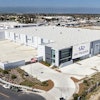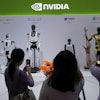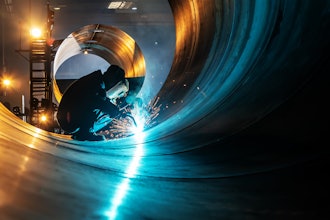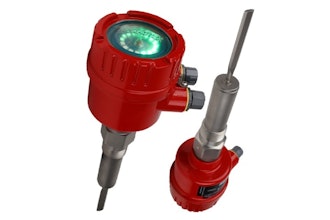If you think the manufacturing skills gap is all just hype, think again.
Research from the Manufacturing Institute and Deloitte predicts there could be as many as 2 million unfilled manufacturing jobs by 2025, up from initial estimates of 600,000. Add to those statistics a whopping 77 million Millennials coming into the labor force (roughly one-fourth of the U.S. population), and what do you get?
An opportunity to revitalize the manufacturing sector, with a renewed emphasis on technology, innovation, and digitization, many of the areas that attract the younger generation of workers.
Yet many manufacturers find themselves reluctant to embrace this new era of manufacturing. ThomasNet’s Industry Market Barometers hows more than half (62 percent) of manufacturers feel Millennials represent a small fraction of their workforce, and eight out of ten (81 percent) have no explicit plans to increase these numbers. What’s more, 43 percent of manufacturers surveyed believe that this generation lacks the work ethic and discipline to succeed.
But the numbers don’t lie: Millennials, ages 18–32, are expected to take over 75 percent of work over the next decade. These shifting workforce demographics will significantly alter the manufacturing landscape.
Let’s examine some ways focusing on Millennial workers can help manufacturers adapt to a changing industrial landscape and come out a step ahead:
1. Address Public Perception & Education
Prioritizing the need for younger workers to replace those exiting the workforce is a good idea in theory — a recent Gallup poll puts 50 percent of Baby Boomers already out of the workforce — but what does it actually look like in practice? In other words, what, specifically, can manufacturers do to attract and recruit younger talentright now?
As noted in a Republic 3.0 post on Millennials in manufacturing, the focus needs to be on the public perception of manufacturing as well as the educational pipeline. Today’s Millennial workers, the article suggests, view factory work as “dirty, dangero us, and offering little job security.” And research from the Manufacturing Institute shows manufacturing’s negative image doesn’t end with Millennials: Just one-third of parents would encourage their children to pursue jobs in manufacturing.
To make manufacturing more attractive to younger workers, manufacturers should start by educating the general public about the industry as it stands today — not what it looked like 10, 20 or even 30 years ago. Already programs like Manufacturing Day are working to inspire the next generation of manufacturers by giving organizations an opportunity to open their doors and show, in a coordinated effort, what manufacturing is — and what it isn’t.
But it goes deeper than that. True talent development begins with a focus on STEM subjects (science, technology, engineering, and math) at both the high-school and post-secondary level. The opportunities are there – but it’s up to manufacturers to get the word out about where and how students can use their background (in technology, computing, etc.) to make an impact in the industry. Only then can manufacturers reap the benefits of a highly skilled and well-educated next generation of workers.
2. Offer Internships & Training Programs
MHI research shows the supply chain industry will need to fill 1.4 million jobs (or roughly 270,000 per year) by 2018. On the one hand, this means manufacturers simply don’t have the time to spend educating the general public about the manufacturing opportunities available to the younger generation of workers. On the other, it means the time to invest in talent is now — not yesterday and not tomorrow.
While perceptions about manufacturing work may cause many Millennials to look elsewhere for employment, manufacturers can combat the problem by offering internship or apprenticeship programs to younger workers interested in learning more about the industry.
As noted in an SMC article on attracting Millennials to manufacturing, the benefits are two-fold: High-school or college students get an insider’s look at manufacturing operations and company leadership gets a real-time look at the next generation’s work ethic.
For Millennials who have already been hired into manufacturing, the same idea applies. Depending on the type of work the employee has been hired to do, companies can pair younger workers with tenured employees, offering a learning opportunity from both sides.
“This presents a real opportunity,” says Mike Twitty, western territory sales manager for RWM Casters. “New people come in and soak up information from those who’ve been in the workforce for decades. At the same time, these individuals can from and cater to the Millennials, the future of the industry.”
3. Go the Way of Technology
Manufacturing has seen a shift in recent years when it comes to management of industrial operations. Companies are embracing new technology faster, which bodes well for younger workers who grew up in the interconnected internet/information economy.
“Integration of technology in the workplace is a must for Millennials,” notes a Stable Kernel blog on the Millennial workforce. “As the first generation to grow up in a digital world, Millennials have mastered how to use technology to socialize, multi-task, and collaborate, among others, and they expect to take those technologies into the workplace.”
The same ThomasNet research study referenced above shows 75 percent of Millennials believe access to technology makes them more effective on the job; 59 percent consider whether or not an employer provides state-of-the art technology when even considering a job.
With innovations like next-generation robotics and additive manufacturing already on the horizon, manufacturers have an opportunity to engage Millennial workers with an interest and educational background in technology. Not only that, but an increased focus on technological innovations allows manufacturers to compete in a technologically advanced market.
Final Thoughts
Let’s face it, Millennials aren’t kids anymore. As they grow up, graduate from college, and enter the workforce, they will increasingly replace Baby Boomers looking to retire. The question then becomes not “Are you incorporating Millennial workers into the labor force?” but “How are you incorporating Millennial workers into the labor force?”
The time to figure out your answer is now.
Scott Stone is the Director of Marketing for Cisco-Eagle, Inc.






















